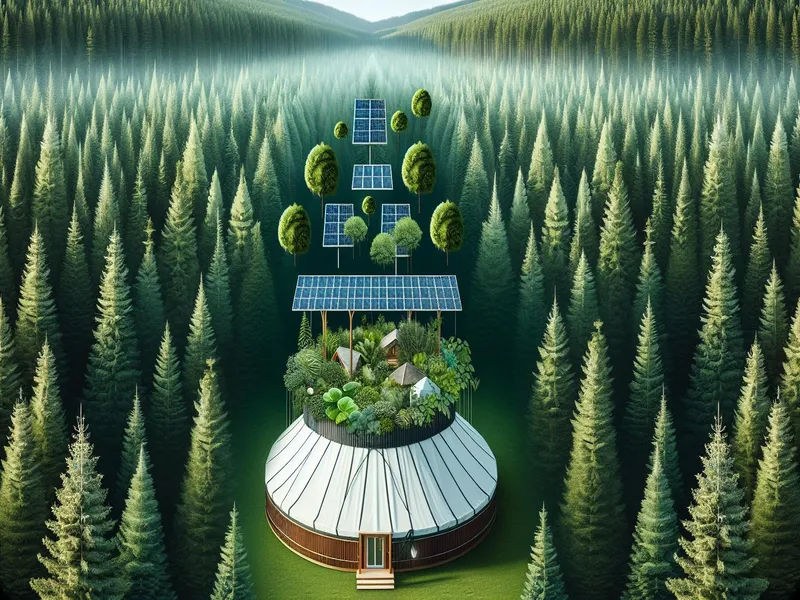
You’re probably searching for ways to enjoy breathtaking landscapes and vibrant cultures without leaving a heavy footprint. Well, you’re in the right place because I’ve got some incredible tips and destinations that align perfectly with your eco-conscious values.
Ignoring sustainable travel practices can lead to overcrowded destinations, environmental degradation, and loss of local culture. It’s not just about feeling good—it’s about ensuring these beautiful places remain unspoiled for future generations. The urgency is real, and every small step counts.
Having spent years researching and practicing eco-friendly travel, I know what works best. From choosing green accommodations to engaging in low-impact activities, there are countless ways to make your journey both memorable and sustainable.
Whether you’re an adventure seeker or someone who loves immersive cultural experiences, this guide will cater to all your needs. And if you’re looking for more ideas on how to enrich your travels sustainably, check out our detailed articles on various travel activities.
I understand the challenges of planning an eco-friendly trip; it can feel overwhelming at times. But trust me—you’ve got this! Together we’ll navigate through practical tips and inspiring destinations that’ll make your North American adventure unforgettable while protecting our planet.
The Rise of Eco Travel
Eco travel’s booming, and it’s not just a trend—it’s a movement. When I first dipped my toes into the eco-travel waters, it felt like discovering a hidden gem in an overcrowded tourist spot. Who knew that traveling sustainably could be so rewarding?
Why Eco Travel Matters
Imagine visiting Yosemite National Park and finding litter scattered around or clear-cut forests where vibrant greenery once thrived. That’s what happens when we don’t prioritize eco travel. It’s all about reducing our footprint and ensuring these beautiful places stay pristine for future generations.
Real-Life Examples
I remember staying at a charming eco-lodge in Costa Rica called Lapa Rios. This place had everything: solar panels, rainwater collection systems, even composting toilets (yes, they’re a thing!). It wasn’t just about being green; it offered an authentic connection to nature that typical hotels lacked.
In North America, places like the Fogo Island Inn in Canada are leading the charge by blending luxury with sustainability. They use local materials for construction and support community projects—talk about making your stay count!
Simple Ways to Be an Eco Traveler
You don’t need to go off-grid to be an eco traveler. Here are some easy steps you can take:
- Choose Green Accommodations: Look for hotels with certifications like LEED (Leadership in Energy and Environmental Design).
- Pack Light: Less weight means less fuel consumption on flights.
- Use Public Transport or Bike: Cut down on emissions while exploring cities.
- Support Local Businesses: Eat at local restaurants, buy souvenirs from artisans rather than mass-produced items.
The Impact of Your Choices
Think of every decision as casting a vote for the kind of world you want to live in. It’s like choosing between fast food and a home-cooked meal—one might be convenient, but the other is healthier for everyone involved.
When you opt for eco-friendly options, you’re not just helping the environment; you’re also supporting communities that rely on tourism without compromising their natural resources.
Hypothetical Scenario
Picture this: You’re planning a trip to Banff National Park. Instead of booking a chain hotel, you find a cozy cabin run by locals who invest part of their profits back into conservation efforts. You hike through trails knowing your stay contributes directly to preserving those landscapes.
Pop Culture Reference
Remember how Thanos wanted balance in “Avengers: Infinity War”? While his methods were extreme (snapping half the universe out of existence), he was onto something about sustainable balance—just without all the villainy!
Key Destinations for Eco Travel in North America

When thinking about eco travel in North America, several destinations pop to mind that are both breathtaking and committed to sustainability. From sprawling national parks to progressive cities, these places make it easy for us to travel responsibly.
National Parks and Wildlife Reserves
North America’s national parks and wildlife reserves offer a sanctuary for nature lovers. I remember my trip to Yellowstone National Park—the geothermal wonders there blew me away! It’s not just about the sights; it’s also how they manage tourism sustainably. They limit visitor numbers during peak seasons to prevent overcrowding.
Another gem is Banff National Park in Canada. Imagine waking up with views of turquoise lakes framed by towering mountains. Here, conservation efforts keep wildlife habitats intact while allowing visitors like us to enjoy the beauty without causing harm.
- Yellowstone National Park: Geothermal features, sustainable tourism
- Banff National Park: Turquoise lakes, wildlife conservation
Eco-Friendly Cities
Cities can be green too! Take Portland, Oregon, for example. This city is a pioneer in sustainability with exceptional public transport and numerous bike lanes making it super easy to get around without a car. Plus, Portland’s farm-to-table dining scene supports local agriculture.
Then there’s Vancouver, which aims to be the greenest city globally by 2020—a goal they’re well on their way towards achieving. With initiatives like zero-waste policies and renewable energy projects, Vancouver sets an impressive standard for urban eco-friendliness. Walking along Stanley Park’s seawall gave me a firsthand experience of how nature harmonizes with urban life here.
- Portland, Oregon: Public transport, bike lanes
- Vancouver: Zero-waste policies, renewable energy projects
Sustainable Accommodations

When we’re talking about eco travel, choosing where you stay is a big deal. It can make or break your green game! Let’s jump into some awesome options for sustainable accommodations in North America.
Green Hotels and Resorts
Green hotels and resorts are popping up everywhere. These places go the extra mile to be environmentally friendly. Picture a hotel that uses solar panels, has water-saving fixtures, and even recycles rainwater. That’s what I found at the Proximity Hotel in Greensboro, North Carolina. This place is LEED Platinum certified—basically the gold standard for green buildings.
- Energy Efficiency: Many use renewable energy sources like solar or wind.
- Water Conservation: Low-flow showerheads and toilets save tons of water.
- Waste Reduction: On-site recycling programs and composting facilities.
Another great example is the Fairmont Waterfront in Vancouver. They have their own rooftop garden, so your salad might feature ingredients grown just above your room!
Eco-Lodges and Cabins
Eco-lodges and cabins offer a closer connection to nature without sacrificing comfort. Imagine waking up in a cozy cabin surrounded by trees, knowing your stay supports conservation efforts.
I once stayed at an eco-lodge called Treebones Resort on California’s Big Sur coast. It’s got yurts (round tents) with killer ocean views! They compost food waste, use solar power, and source food locally.
- Natural Materials: Structures often built from reclaimed wood or other sustainable materials.
- Off-the-grid: Some rely entirely on renewable energy sources like wind turbines or hydroelectric generators.
- Local Impact: Often support local communities through employment and sourcing of goods.
For something more rustic but equally compelling, check out the cabins in Ontario’s Algonquin Provincial Park. They’re simple but designed to minimize environmental impact while maximizing your wilderness experience.
Staying in these types of accommodations means you’re not just having an amazing trip; you’re also helping preserve these beautiful places for others to enjoy.
Transportation Options for Eco Travel
Exploring North America sustainably starts with choosing the right transportation. You’ve got options that are both eco-friendly and enjoyable.
Public Transportation and Biking
Public transit and biking are fantastic ways to reduce your carbon footprint. Many cities, like Portland and Vancouver, have robust public transportation systems that make getting around easy without a car. In Portland, I hopped on their light rail system called MAX—it’s efficient, affordable, and green.
Biking is another excellent choice if you’re up for a bit of exercise. Cities like Montreal offer extensive bike-sharing programs (think BIXI bikes) where you can rent a bike for an hour or a day. Not only do you get to see the sights at your own pace, but you’re also reducing emissions.
Electric and Hybrid Vehicle Rentals
Sometimes public transport isn’t feasible for every part of your trip. That’s where electric and hybrid vehicle rentals come in handy. Companies like Enterprise and Hertz now offer a range of electric vehicles (EVs) such as the Tesla Model 3 or Chevy Bolt.
During my last trip to California, I rented a Nissan Leaf from Enterprise’s EV fleet—smooth ride, zero emissions! Many rental agencies even provide charging stations at convenient locations so you won’t have to worry about running low on juice.
Incorporating these options into your travel plans makes exploring North America more sustainable while still being fun and flexible.
Outdoor Activities with Minimal Impact
Exploring the great outdoors is an essential part of eco travel in North America. Engaging in activities with minimal impact helps preserve these natural wonders for everyone to enjoy.
Hiking and Camping
Hiking and camping offer a fantastic way to connect with nature while keeping your environmental footprint small. I remember trekking through Yosemite, marveling at its towering sequoias and granite cliffs. Leave No Trace principles are crucial here: pack out all trash, stay on marked trails, and avoid disturbing wildlife.
Consider using eco-friendly gear like biodegradable soap or solar-powered chargers. These simple choices make a significant difference without sacrificing comfort or convenience. Imagine setting up camp by a pristine lake, feeling good about leaving it as beautiful as you found it.
Water-Based Activities
Water-based activities can be both exhilarating and sustainable. Kayaking down the Colorado River was one of my favorite adventures—paddling quietly allows you to appreciate the surrounding beauty without causing harm.
Opt for non-motorized options like kayaking, canoeing, or paddleboarding to minimize pollution and disturbance to aquatic life. If diving or snorkeling interests you, choose operators that follow eco-friendly practices, such as reef-safe sunscreen policies and waste reduction efforts. Picture yourself gliding over coral reefs teeming with life, knowing you’re not contributing to their decline.
By making mindful choices during these outdoor activities, we can enjoy North America’s stunning landscapes while ensuring they’re protected for future generations.
Supporting Local Communities
Exploring North America responsibly means lifting up the places and people you visit. Eco travel isn’t just about the environment—it’s also about giving back to local communities.
Local Guides and Tours
Opt for local guides when exploring new areas. They’re not only experts on the world but often have deep cultural insights too. I once took a guided hike in Banff with a local who shared fascinating stories about indigenous traditions and wildlife habits. These personal touches make your experience richer while ensuring that tourism dollars stay within the community.
Local tours can include:
- Cultural Walking Tours: Learn history straight from those who live it.
- Wildlife Safaris: Understand ecosystems from guides deeply connected to the land.
- Artisan Workshops: Discover crafts and skills passed down through generations.
Farm-to-Table Dining
Eating farm-to-table supports regional farmers, reduces carbon footprints, and offers fresher meals. When I visited Portland, I dined at a restaurant sourcing all ingredients within 50 miles. The heirloom tomatoes tasted like sunshine, and knowing they came from nearby farms made every bite more meaningful.
Farm-to-table dining highlights:
- Seasonal Menus: Enjoy dishes featuring ingredients in their prime.
- Local Specialties: Taste unique flavors specific to each region.
- Sustainable Practices: Many of these eateries use eco-friendly packaging or composting methods.
By choosing local guides and farm-to-table dining options, you enrich your travel experience while making a positive impact on the communities you visit.
To Sum Up
Eco travel in North America offers endless opportunities to explore stunning destinations while preserving the environment. By making mindful choices and supporting sustainable practices, we can ensure these beautiful landscapes and vibrant cultures thrive for future generations. Whether you’re staying at a green hotel or exploring national parks, every decision matters.
My experiences have shown that eco-friendly options don’t compromise on comfort or adventure. From luxurious stays at the Fogo Island Inn to hiking through Yosemite with Leave No Trace principles, there’s always a way to travel responsibly.
Let’s make our journeys meaningful by choosing paths that benefit both the planet and local communities. Embracing eco travel isn’t just about reducing our footprint; it’s about enriching our experiences and creating lasting positive impacts. So next time you plan a trip, consider how your choices help protect North America’s incredible natural heritage. Happy travels!